Climate change activism group Sunrise PDX is hosting an info session tomorrow (6/17) on Metro’s Get Moving 2020 transportation funding bond measure.
It’s been easy to forget with the pandemic and protests dominating the news since March, but Metro still hopes to put this measure on the ballot in November. If all goes according to plan it will raise $3.1 billion for infrastructure projects, including $975 million for the new SW Corridor MAX light rail line.
“Now more than ever the intersectionality of environmental justice, racial justice and transportation justice is a major key in how our city proceeds with its priorities,” reads a description of the event. “Feedback about the anti-oppression and community engagement portions of this bond will be an especially important part of how we move forward.”
Sunrise will be joined by Getting There Together Coalition, a group of 50+ organizations that’s working to make sure investments are equitable and don’t result in displacement of low-income people.
Advertisement
Last week the Willamette Week reported that Metro’s latest polling shows the measure “is in trouble”. Support for the measure is trending downward as our region has suffered a major economic blow due to ongoing Covid-19 and related concerns.
Conditions on the ground have changed dramatically in recent months: Fewer people are commuting to commercial centers as work-from-home rates have skyrocketed; transit use is way down; and considerations about how people of color use streets has become the greatest concern of many in our community.
Sunrise PDX organizer Micah Bishop shared with BikePortland today that their group wants to expand engagement on critical issues like transit justice. “Our community members all have a right to understand and weigh in on great solutions to common economic and transit solutions like Youth Pass, Safe Routes to School, and anti-displacement programs.” Bishop added that tomorrow’s event is, “An opportunity for people to come together and discuss how they use transit, and how Portland transportation could function better in their lives.” “Everyone has the right to reliable, low-carbon transportation,” they continued.
If you’d like to join the session, fill out this brief form in order to receive a meeting registration link. Learn more about the event on the BikePortland Calendar.
— Jonathan Maus: (503) 706-8804, @jonathan_maus on Twitter and jonathan@bikeportland.org
— Get our headlines delivered to your inbox.
— Support this independent community media outlet with a one-time contribution or monthly subscription.


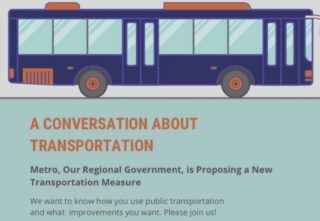
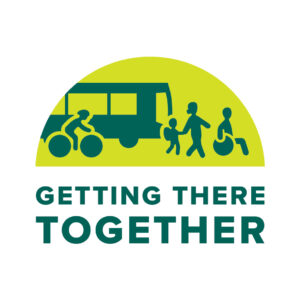
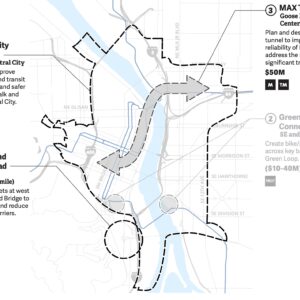
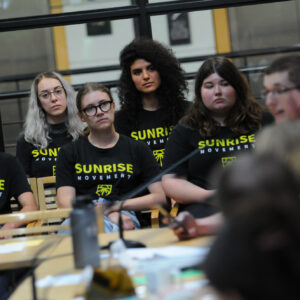
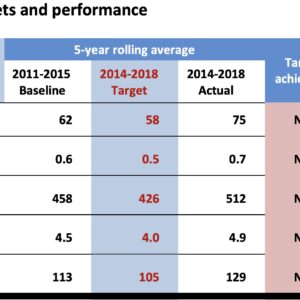
Thanks for reading.
BikePortland has served this community with independent community journalism since 2005. We rely on subscriptions from readers like you to survive. Your financial support is vital in keeping this valuable resource alive and well.
Please subscribe today to strengthen and expand our work.
For years I was a diehard pro-every-transit-measure voter. No more! Performance of past projects has been getting progressively worse. The Orange Line is so far below expectations it is not even funny. Green and Yellow are also performing exceptionally bad in terms of ridership, avg speed and frequency.
I have been and remain a huge advocate of all forms of alternative transportation but we need to be reasonable and demand a better ROI not make-work projects for the already busy and bloated construction industrial complex.
I started out pretty strongly in favor of this item, but have gradually been losing enthusiasm, especially when Metro voted to support the Rose Quarter expansion. For me to be on board, I need to be pretty convinced that this proposal will be climate-positive, to an extent that makes it worth spending the money. That is pretty much my sole criteria.
Right now I am not convinced. I hope to become so by November because I don’t want to break my uninterrupted decades-long streak of supporting transit measures.
I don’t think the Rose Quarter expansion is part of this November measure, but I could be wrong.
There’s nothing in there that directly supports the Rose Quarter Expansion, but there is an Albina redevelopment scheme in there that assumes the expansion will occur and tries to mitigate the impacts. Lots of good stuff for East Portland too I’m happy to see, plus a study to bury the MAX downtown (cut-and-cover subway).
I agree with this, but would take it a step further. I believe the rationale for the MAX tunnel is primarily to shorten commutes thru downtown, but why build an expensive tunnel to do so? In my opinion, TriMet is already on the right track by closing some of the stations. If they want longer trains and even more efficient commutes, it can be achieved much more cost effectively by closing many of the cross streets that intersect with MAX tracks. Do like other European cities and make it difficult to drive a car across/thru downtown, with only a few select thru-corridors, and fully rebuild existing streets as needed with extended MAX platforms, plazas and parks, etc. $3B, at a minimum for the tunnel just seems so costly. I don’t understand the American obsession with over engineering all the infrastructure we want (or try) to build.
I believe part of the rational for going underground is to make the MAX right-of-way exclusive, to remove conflicts not only with cars, but also pedestrians, emergency vehicles, protesters, the weather, police, etc. But there’s also some (very expensive) envy of other cities’ subways in Seattle, Vancouver BC, SF, LA, etc.
Also, just as above-ground light rail or streetcar tends to attract medium-density development in most US (and European) cities, subways have traditionally been “proven” to attract super-high-density development – tall tower blocks, underground malls, corporate centers – that every city craves for (including Portland.)
There are a lot of people who commute along the I-5 corridor. It’s not reasonable to use public transit to get from Wilsonville or Lake Oswego to/from downtown Portland. The best existing options are to somehow get oneself to a bus stop along Barber, but even that option usually involves driving part way. If you’re already halfway there and driving, there’s not much incentive to not just finish the trip with the same mode. Extending MAX down to Tualatin opens up realistic alternatives for those people.
Whether people will stop driving to take advantage of MAX is a separate question, but they definitely aren’t going to stop driving when the public-transit alternative is 2+ hours each way. That is at least some hope for a positive climate impact.
The salient question to me is not whether people will take the MAX (I’m sure some, perhaps many, will), but whether there will be enough reduction in driving to justify the system’s operating energy budget and eventually pay off the highly intensive carbon footprint of its construction.
Maybe enough of those potential MAX riders will become permanent work-from-home people, neither driving nor riding, and it will never “pay” for itself. Sometimes the most carbon positive thing to do is nothing.
I agree the construction will add to the carbon footprint, but once built, the removed car lanes removed will no longer need to be repaved every 5+ years. And like in 1918-20, our Covid-19 phobias will vanish by 2022 with everyone once again hugging each other (and their bikes) on crowded MAX trains.
My crystal ball has cataracts. But MAX is electric, and that’s ~45% fossil fueled instead of ~95% fossil fueled (for cars). I can’t find any stats on how many tons of CO2 or kW it takes to run MAX, so I don’t have a direct comparison. Around 6800 riders/month ride WES already, which is diesel. I’m too lazy to go find Trimet’s projected ridership, but thousands fewer cars is a sizable net operational emissions benefit. So even if the construction emits a bunch, that’s a one-time loss vs. an ongoing win. It’s just a matter of time to be net-positive.
Another point worth considering is whether we ever want a southwest MAX line. To me, the answer is a clear yes. We must enable more density, better transit options, and leaving one quadrant of the city completely unserved by the flagship transit service that everyone else gets feels wrong. If we want MAX service someday, then it’ll only get harder and more expensive the longer it’s delayed.
A few years ago, I read an analysis that the total operational energy of MAX (forget if it included buses) was similar to each passenger driving a small single occupancy car (in part because there’s a lot of large, near empty vehicles riding around a lot of the time). Ridership is critical to the energy equation, and the Orange Line hasn’t been a spectacular success.
Looking forward, I am very uncertain that large fixed-route vehicles are the future of transit. I hope TriMet/Metro have done some clear-eyed prognosticating, and aren’t just following the familiar path because that’s all they know how to do.
Mass transit serves several purposes, some of which may seem important now but become superseded by other purposes later on. Moving large numbers of people is clearly important, and when the economy is thriving, it tends to do it well, but not so well during economic slumps and emergencies. But another purpose, in many cities an even more important one, is to promote higher-density development – using less land area to house and employ more people, which has huge long-term energy and climate benefits – whether those folks use the mass transit or not. And mass transit also promotes a certain community pride, that we have it and you don’t, a bit like Portland having a national reputation of being ridiculously bike-friendly, even if it is a bit false. MAX makes Portland seem like a thriving high-density major American city and has proven to be successful in getting the city to grow within the same boundaries today as it had in 1992, even during the Great Recession in 2008. Detroit, to cite an extreme example, is a city perceived as overly car-oriented with very poor mass-transit infrastructure – and a population that has shrunk so much that it’s now about the same size as Portland.
What do you think the future of transit is? (I ask that earnestly.)
What MAX has going for it, uniquely, is right of way. (Capacity, too.) Every other mode has to wait, and that gets worse the more traffic there is and the longer the distance. Those grow more important with more density (and don’t do so well with low usage, as you mentioned). If there’s any trend I’d bet on, it’s that more of our population is accumulating in urban and surrounding suburban areas. You see it in housing and rent prices, for one. Even if MAX is equivalent to driving a car today, it won’t stay that way as the area population continues to increase. Until we get our flying cars (any day, please! I’m ready), nothing else in transit can compete with MAX on time, because of the right-of-way and capacity advantage. Regardless of what ends up happening in transit, I think MAX is a long-term win. Time is always going to be valuable, so that makes MAX part of the future.
(Assuming you are asking me)
I don’t think our future “transit” systems (20-30 yrs) will look much like our current fixed-schedule fixed-route system.
I think the future will be automated and electrified (that part is easy), that it will be more on-demand, point-to-point, and will use smaller vehicles. If implemented in the most logical manner (acknowledging that nothing ever is), private vehicles will become a rarity. Without drivers, the system will be much cheaper than Uber/Lyft are today.
My guess is that we’ll have a tiered system of automated vehicles, some single occupant, some van-sized, that will operate similar to the way Uber/Lyft does now. Higher cost for car-like service, lower for the vanpool class. I don’t even know that TriMet will be in the picture.
If you can get a ride from your house to your place of employment for $5, in privacy* and security, wouldn’t most people use that over conventional transit?
The real question is system bandwidth — could such a system accommodate sufficient vehicles to work? I don’t know about that. But if demand for travel falls due to increased telework (which seemed a fantasy before March), maybe it won’t have to.
If only half of people switch to an automated vehicle system, would MAX still make sense from a cost/energy standpoint? At some point, if a sufficient number of people stop using “conventional TriMet”, it will become unsustainable and collapse.
*From other passengers; surely your movements will be tracked much more closely than today.
The only reason I don’t think the autonomous electric transit system will doom public transit is the scale (or bandwidth) problem you mentioned. I don’t think the number of people moving around metro is going to go down, long-term. The virus is a blip and population is increasing. If anything, demand for capacity to move people is going to keep climbing.
From a capacity standpoint, the system we have now would not be much different than your autonomous electric transit vision, in the sense that a large portion of rides are single-person and if that number of people aren’t willing to take cheaper multi-occupant transit today, they probably won’t 20 years from now, either. In very rough terms, same number of people equals the same number of vehicles. But today’s infrastructure won’t scale to +20yr population without longer commute/transit times, and MAX starts to look better.
It sounds to me that you are saying that because MAX is less “bandwidth constrained”, it will be able to travel more quickly bypass crowded streets (as it does today in some areas), and that speed advantage will be attractive enough that it will enjoy sufficient ridership to keep it sustainable.
Impossible to tell, of course, but that seems to be the only hope for its survival. And it has to be not just faster “in motion”, but faster overall, door-to-door, which is where a point-to-point, on-demand service has a big advantage.
In a world where daily travel is less critical (easier to work remotely, delivery even more routine), and where “driving” requires no attention (so people can do other things), I’m not sure that even a modest time savings will overwhelm the attractions of robo-taxis.
[I agree that in some aspects of covid will be a blip, but I think the acceptance of working remotely will be permanent. It’s just too obvious and beneficial to all parties to go away.]
But one thing is for sure… we will find out.